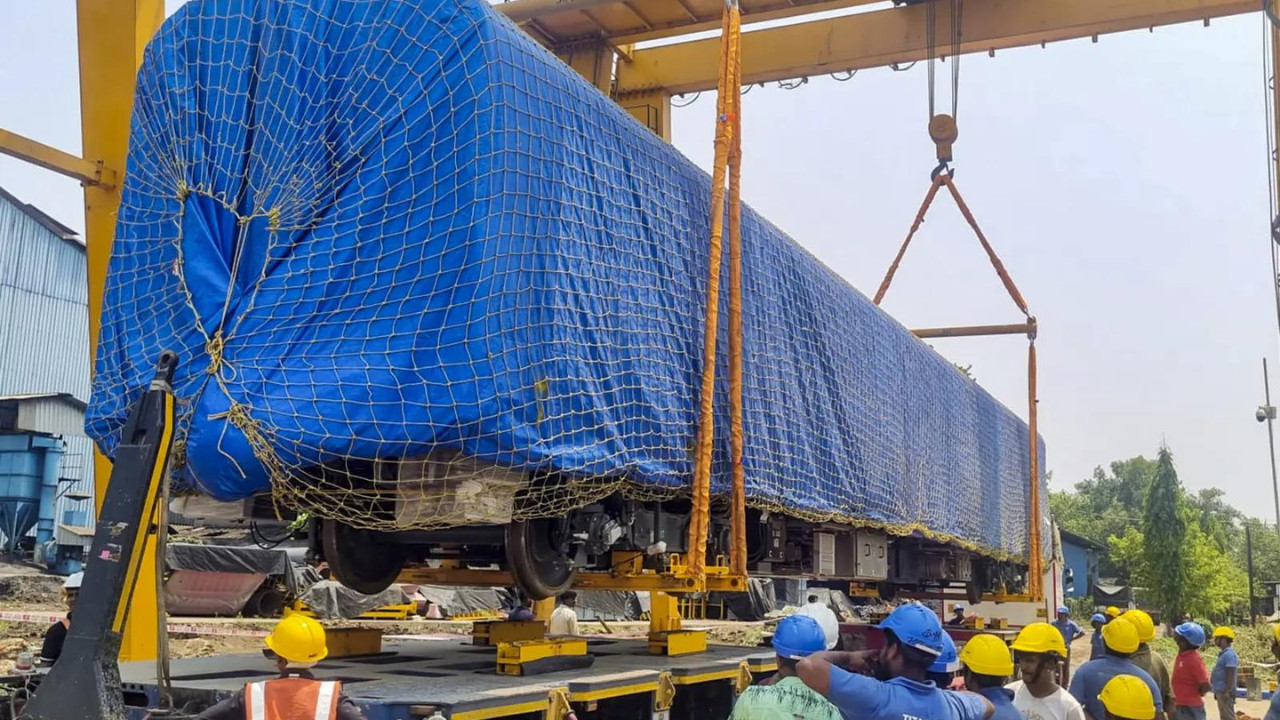Bengaluru is gearing up for a major boost in its transport infrastructure. Prime Minister Narendra Modi will inaugurate the Yellow Line on August 10. He will also lay the foundation stone for Metro Phase 3. The Yellow Line spans 19.15 km, connecting RV Road to Bommasandra. Phase 3 will further expand the metro network by 44.65 km.
Bengaluru Gets a Boost: Riding High on the New Yellow Line
Bengaluru’s infamous traffic is the stuff of legends (and nightmares). But relief is on the horizon! The city is poised to welcome a significant addition to its metro network: the Yellow Line. Prepare to say goodbye to some of that commute-induced stress as this new line promises to revolutionize travel across key IT corridors and residential areas.
Forget tedious bus rides or battling for auto rickshaws; the Yellow Line is set to become the preferred mode of transport for countless Bengalureans. Let’s dive into what makes this such a game-changer for the city.
Unveiling the Yellow Line: A Commuter’s Dream
The Yellow Line, officially known as the R.V. Road – Bommasandra Line, stretches an impressive 19 kilometers, connecting the southern and southeastern parts of Bengaluru. It weaves through crucial areas like Electronic City, the heart of Bengaluru’s tech industry, and the bustling residential hub of Bommasandra. This elevated corridor comprises 16 stations, each designed with accessibility and convenience in mind. Think smooth transitions, ample parking, and integrated feeder services.
The line boasts state-of-the-art technology, including Communication Based Train Control (CBTC), which allows for quicker headways and improved safety. The coaches themselves are designed for maximum passenger comfort, featuring spacious interiors and real-time information displays.

Decoding the Route and Stations
The Yellow Line strategically connects key areas, easing congestion on arterial roads and offering a seamless travel experience. Starting from R.V. Road, the line traverses through areas like Ragigudda, BTM Layout, HSR Layout, Bommanahalli, and traverses through the heart of Electronic City before reaching Bommasandra.
Each station is meticulously planned, with a focus on accessibility and integration with existing transport networks. Many stations will offer park-and-ride facilities, encouraging commuters to switch from private vehicles to the metro. Feeder bus services will also be integrated to extend the reach of the Yellow Line to surrounding localities.
The Impact on Bengaluru’s Connectivity
The Yellow Line isn’t just about adding another route; it’s about fundamentally transforming how Bengaluru moves. By connecting Electronic City, a major employment hub, with residential areas like Bommasandra, it is expected to significantly reduce traffic congestion on Hosur Road, one of the city’s busiest thoroughfares.
Beyond easing traffic woes, the Yellow Line is poised to boost economic activity along its route. Improved connectivity can lead to increased real estate values, the establishment of new businesses, and greater opportunities for residents. It also reduces commute times, giving people more time for family, leisure, and other pursuits. It is projected to significantly decrease travel time between key areas. What once took hours in peak traffic could now be accomplished in a fraction of the time.
A Sustainable Step Forward
In a city grappling with air pollution and environmental concerns, the Yellow Line represents a significant step towards sustainable urban mobility. By encouraging a shift from private vehicles to public transport, it can contribute to reduced carbon emissions and improved air quality. A move to public transportation options will surely help the city in the long run.
This addition to the city’s infrastructure also aligns with Bengaluru’s vision of becoming a more walkable and cyclable city. With improved public transport options, residents are more likely to opt for eco-friendly modes of transport for short-distance travel.
Looking Ahead: A Brighter Future for Bengaluru
The Bengaluru Metro Yellow Line is more than just a new transportation project; it’s an investment in the city’s future. It promises to ease congestion, boost economic growth, and contribute to a more sustainable urban environment. As Bengaluru continues to grow and evolve, the Yellow Line will undoubtedly play a crucial role in shaping its identity as a modern, connected, and livable metropolis. Consider reading about the [challenges and future of urban mobility in India](https://example.com/urban-mobility-india) for a broader perspective.
With its strategic route, advanced technology, and focus on passenger convenience, the Yellow Line is poised to become a cornerstone of Bengaluru’s public transport system. Get ready to hop on board and experience a new era of seamless and efficient commuting. It is hoped the Yellow Line meets and exceeds the expectations of its patrons in terms of speed, ease of use, and overall effectiveness.





